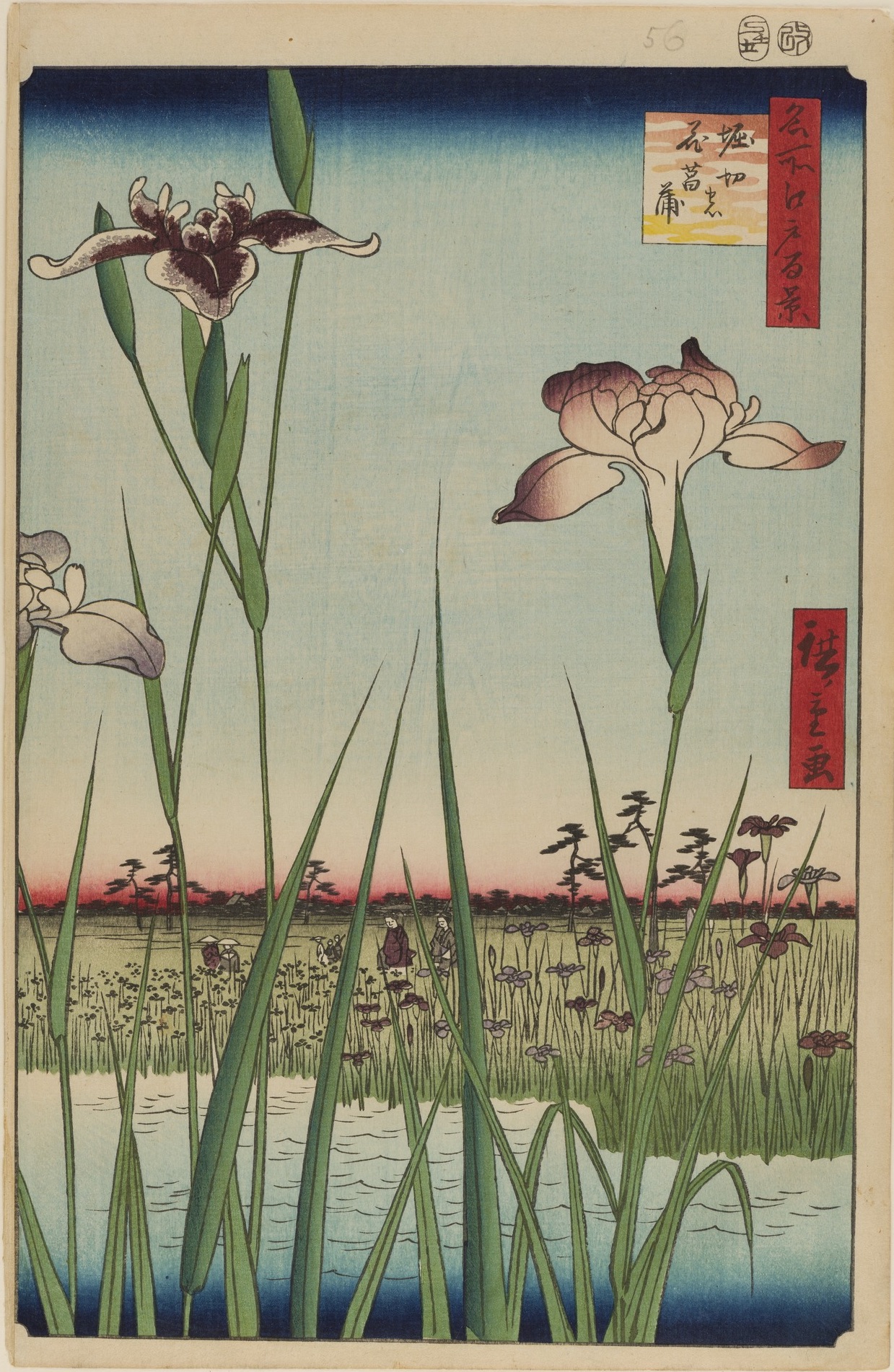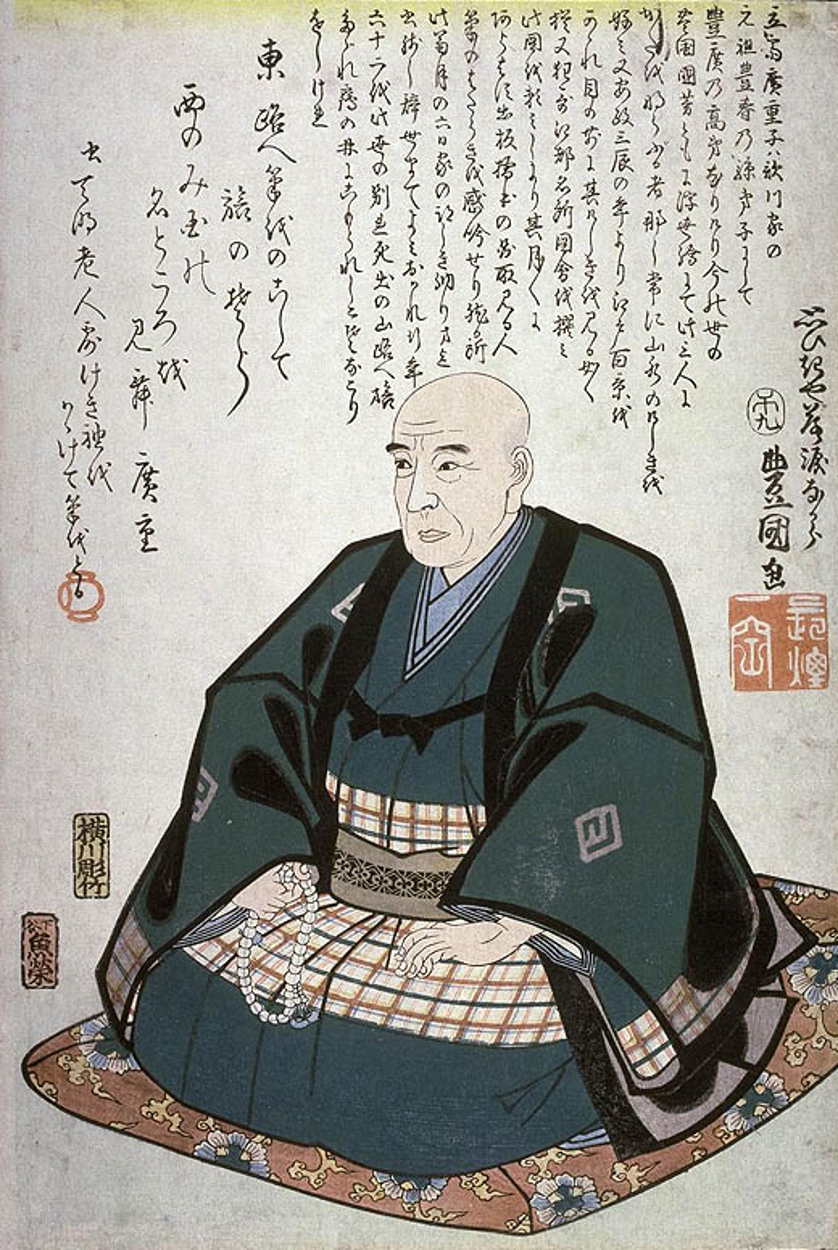Ah, the beauty of Japanese art!
Hiroshige, a celebrated master of the ukiyo-e art (“pictures of the floating world”), spent his life in Edo, known today as Tokyo. Like Hokusai’s Thirty-Six Views of Mt. Fuji from 1830, which popularized the landscape print among a wide audience, Hiroshige created his own series of evocative landscape prints in 1856-58 entitled One Hundred Famous Views of Edo. His works, featuring renowned locations (meisho), captured the seasonal atmospheres traditionally associated with these.
The series consists of 119 woodcuts depicting landscapes and daily life in mid-19th-century Japan. One of his prints depicts Horikiri, a village famed for its flower cultivation for the Edo market, specializing in a diverse array of blooms year-round. Its reputation primarily stemmed from the hanashōbu iris, however, a flower that thrived in the region's marshy terrain. This print prominently features three beautifully depicted hanashōbu irises in the foreground. In the background, we can observe visitors from Edo admiring the floral spectacle. Hiroshige humorously observed that the abundance of beautiful women from Edo visiting the gardens made it challenging to discern the actual flowers from the visitors.
P.S. If you love prints like this you should definitely check out our Japanese Art 50 Postcards Set - full of amazing works by classic Japanese artists (including Hiroshige!)
P.P.S. Did you know one of Hiroshige's prints inspired Vincent van Gogh? The Japanese master had a great influence on the famous Dutchman.


 Hiroshige
Hiroshige